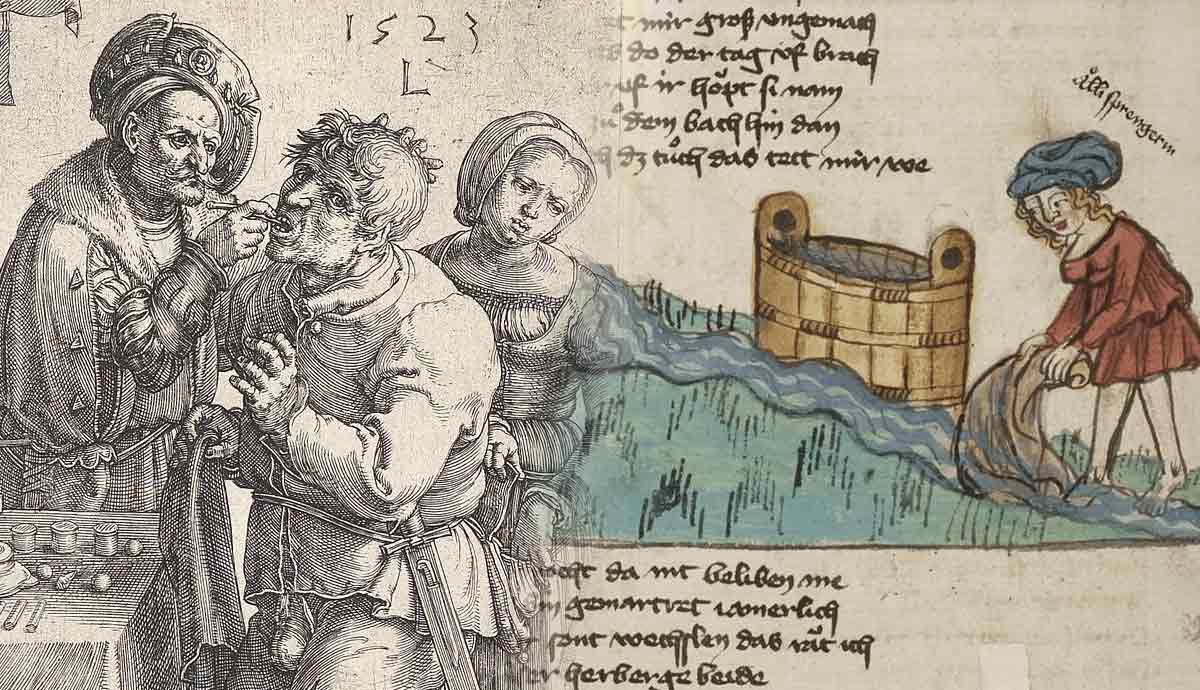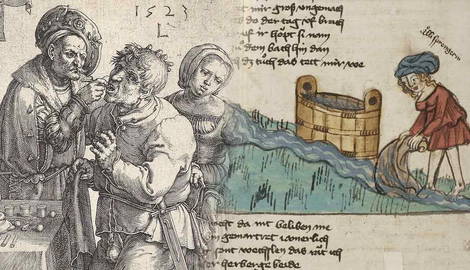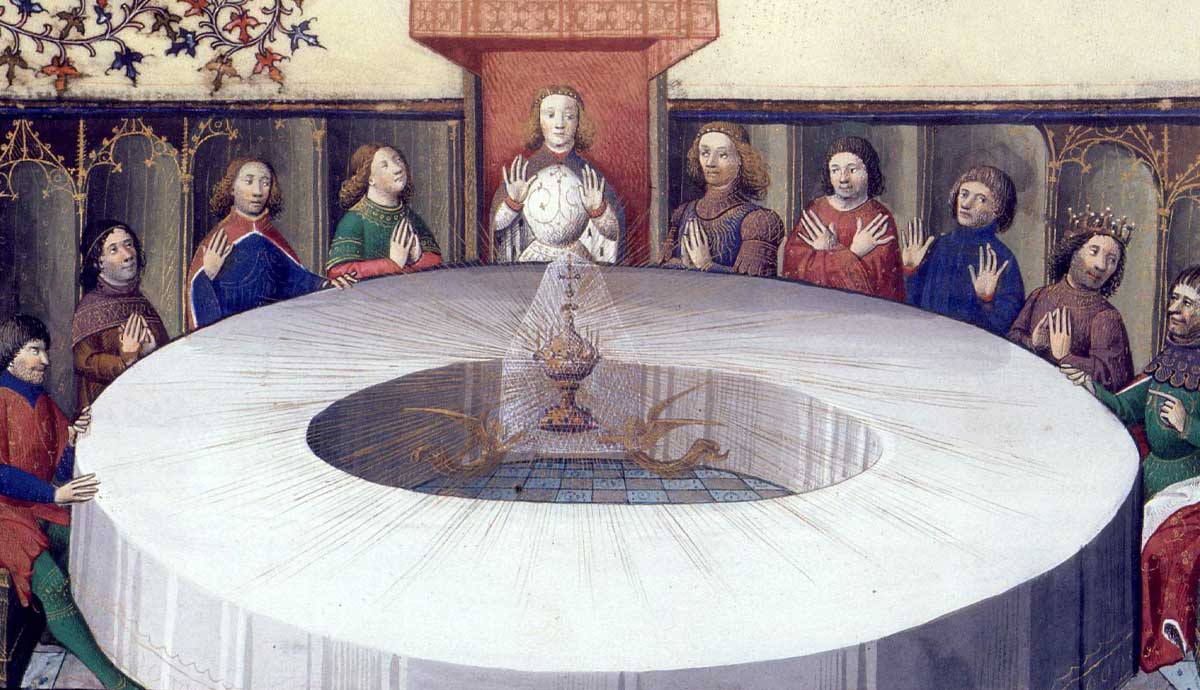
The Middle Ages has a reputation for being a time when the average person lived in filth and squalor, bathing was unheard of, and personal hygiene was a foreign concept. But is this true? There is no simple answer to this question since the Middle Ages lasted almost a thousand years, and customs differed in different parts of the world. But it is fair to say that while medieval hygiene probably wouldn’t impress by modern standards, people had bathing and hygiene routines and understood the importance of cleanliness to protect against sickness and disease.
Regular Washing

Bathing was the cornerstone of any hygiene routine in the Medieval era. The exact methods used varied greatly depending on the season, location, and wealth of the person wanting to clean themselves. For those near rivers and streams, dipping themselves in the water and scrubbing themselves with a cloth could provide some degree of cleanliness. This could be done several times a week, though it would become less frequent in colder seasons since the threat of hypothermia was much more of a concern than washing.
For those who lived further away from a body of water, this was not always feasible. Water had to be transported by hand from the water source, such as a lake, river, or well, and then hauled into the person’s home. Because of this limitation, the act of full bathing was not as common except among the wealthy. But for those who could afford to do so, such as the nobility, bathing was taken very seriously. Most commonly, they would bathe in a basin or barrel, and rather than sitting in the water, would stand and pour the water over themselves. Bathing and overall cleanliness were so important that some nobles would travel with a portable tub so they could stay clean, even when on the road.
For peasants too poor to have servants haul water from the local river to fill the basin, much less labor intensive methods would be used. Often, this would involve using a damp cloth to scrub away the dirt and grime from the hands, underarms, and genitals. This was done several times a week, if not daily. Hand washing from a small ewer was also commonplace, and people could wash, or at least rinse their hands, several times a day. The medieval period did not yet develop the germ theory for disease, though it was obvious that eating with dirty hands was a cause of disease, even if they were unaware of the reason. Washing the feet, especially before sleeping, was also a common practice.

In large enough cities, there were bath houses. These establishments had large pools that could be filled with warm water. They sent out boys as criers to tell the locals that the water was hot. These places were used for both bathing and socialization. Townsfolk could gossip, play games, and interact with one another in a casual environment. Men and women bathed together, which was generally accepted, although clergy would oftentimes condemn bath houses, not for the bathing itself, but from the inevitable prostitution that happened there.
Soap and Pest Control

In addition to washing with water, other methods were used to stay as clean as possible. Soap had been used for centuries as a way to clean clothing and was made from a mixture of fat, usually tallow, and potash. Soap of this kind was not used on the skin since it was very harsh. It wasn’t until the introduction of soaps made from olive oil and other plants that it became mild enough for washing bodies. These soaps were a luxury reserved for the rich and well-connected. For the poorer classes of society, water would be infused with various herbs and scented plants, such as basil, mint, or lavender. If nothing else, a person could rub their hands with wood ash. The ash would mix with the oils of the person’s skin, creating improvised soap. However, they had to be careful to rinse it off quickly, or it could result in a chemical burn.
Despite their best efforts, the medieval population was plagued by numerous parasites, such as fleas and lice. Mattresses were stuffed with straw, a perfect breeding ground for these pests. To drive them away, they were often infused with herbs such as lavender, mint, or chamomile. These same herbs were also hung around the house as makeshift air fresheners.
To keep lice and fleas out of a person’s hair, people used combs. These could be made from ivory for those who could afford it, though even the poorest of peasants could afford to whittle a comb from wood. These would be fine-toothed and not only helped rid hair and beards of pests but also swept away grime and dirt. Daily combing was a common practice, so common that combs are among the most common grave goods found in Norse burials. Clothing could also be infested with pests. It was hung up next to the fireplace overnight for the heat and smoke to drive the bugs away.

While people in the Middle Ages were concerned about their outer cleanliness, they were also worried about other aspects of hygiene. Dental care involved using makeshift brushes made from sticks, often hazel branches, to scrub the teeth. They could also be cleaned using linen cloths after a meal, and mouthwashes of vinegar and herbs would also be used regularly. Records suggest that the Welsh were particularly obsessive with dental care and polished their teeth so often that they would shine like ivory. Care had to be taken to avoid seeing a dentist, who could be less than gentle when dealing with rotten teeth.
Waste and Disease Management

One of the most enduring myths about the Middle Ages is that they had a flippant attitude towards removing human waste. Supposedly, excrement was simply thrown out of a window onto the street. This is simply not true. First of all, no one wants to live near the smell of human waste if it can be avoided, so dumping it out of a window right next to one’s house is unlikely. Moreover, many towns and cities had very strict laws about the cleanliness of their streets. As a general rule, the owner of a house was responsible for the upkeep of the area directly in front of their property. There are many examples of fines levied for citizens who allowed rubbish of any kind to accumulate in front of their homes. Dumping waste into the street would almost certainly result in a hefty fine that could easily be avoided.
On large estates or castles, waste was disposed of in latrines or cesspits outside the building, which were emptied regularly by dedicated workers called gong farmers. Cesspits could be lined with stone to prevent seepage into the surrounding area. The waste was then transported to a local river or stream, or given to farmers for fertilizer. Smaller homes also had latrines outside, though on a much smaller scale.
In cities, smaller homes did not have the luxury of a latrine and used buckets to collect the excrement, disposing of it later in a stream or communal cesspit. In castles, toilets were located overhanging the moat, the defensive ditch that ringed the fortress. These methods were not totally efficient, and dumping waste into a waterway only served to contaminate it further downstream. Nevertheless, efforts were at least made to dispose of waste safely. Urine was also disposed of the same way, though it could also be collected and used for a number of industrial purposes, such as tanning and wool processing.

Despite their efforts, there was little the people of the Middle Ages could do to prevent the spread of certain diseases, given their lack of technology and understanding of germs. During the 14th century, Europe was gripped by the Black Death, a bubonic plague that killed off about a third of the population. Numerous methods were used to cure the disease, which ranged from prayer and fasting to bloodletting and more bizarre esoteric cures, like using precious stones or rubbing the cut-up parts of a snake on the skin. Some techniques, however, were actually effective in stopping the spread of the disease. Our medieval ancestors engaged in “social distancing.” Those who had the means to do so would leave a plague-contaminated area, keeping themselves apart from the infected.
However, this only worked if the refugees were accepted in the new area. Many medieval cities closed their doors to those fleeing from plagued-ravaged lands or imposed strict measures on them. One of these was to isolate the potentially infected individuals in designated areas away from the rest of the population. Initially, this was for 30 days, but it was soon increased to 40 days, a process known as quorontino, which entered the English language as quarantine. Milan took a very hard stance against the plague, at one point locking three households inside of their homes to keep the disease from spreading. They also set up a building outside of the city where the plague victims could be cared for away from the general population. As a result of these measures, Milan suffered lower rates of mortality from the Black Death than other parts of Europe.
Why the Terrible Reputation?

People in the medieval period would indeed be considered unhygienic by our modern standards, but this is more due to advances in technology and understanding of biology and germ theory than for lack of trying. In fairness, people in the Middle Ages were just as concerned about cleanliness and hygiene as we are today. So, why does this time period have such a poor reputation in the modern world for its filth? The answer is likely found in the Victorian era.
During the Middle Ages, not everyone took hygiene seriously. Clergy often considered excessive concern over cleanliness a sign of vanity and pride and a symptom of concerning oneself with earthly things over spiritual matters. Consequently, many did not clean themselves and even thought of living with things such as lice and fleas as a test of spiritual discipline; their ability to endure such conditions was a way to humble themselves. Victorian historians and scholars saw these tales and extrapolated the actions of a few individuals as representative of the population at large. The Victorian era was also one of scientific advancement, and history was treated as a moral lesson. They wanted to show how far society had progressed over the centuries and would latch onto stories that painted the superstitious past in a negative light to highlight their own sense of advancement.
More recent scholarship and careful reading of texts have concluded that the unhygienic Middle Ages are, for the most part, an exaggeration. Pop culture and general misunderstanding have magnified this myth over the years.










